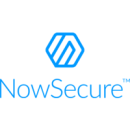NowSecure recently released NowSecure Platform 5, a new version of its mobile app security and privacy platform. The release was the culmination of a year-long project to build a new user experience and included an analytics dashboard, Portfolio Health, that was released iteratively — by design.
You read that right: The analytics dashboard of NowSecure’s shiny new platform was released iteratively rather than a fully specced first version, a revolutionary step in the way NowSecure builds, validates and ships software.
This wasn’t the result of a rush job to meet a deadline but rather a strategic decision, said Adam Goodman, SVP of product management. In an effort to deliver value to customers faster, NowSecure is implementing a more iterative product development process — one that requires increased cross-team collaboration and acceptance from its team that they may not get things right on the first try.
Built In spoke with Goodman to learn more about the development of Portfolio Health and the company’s transition toward iterative product development.
Why did NowSecure build Portfolio Health Dashboard?
We decided to launch an updated user experience in the second half of 2022 and knew there were a few key features we would need to add, specifically a way to view the security and privacy issues across a customer’s entire mobile app portfolio, a feature we named Portfolio Health Dashboard.
Having a way to easily see what risks an organization is exposed to in a single place gives our customers greater visibility into their security posture and enables them to start the day knowing the issues they have to address. Since we decided to be iterative about how we build out our new user experience, we interviewed customers to really understand their needs and built a solution, Portfolio Health, that helped solve their problems using a test, learn and iterate mindset.
What role did you play in developing and launching Portfolio Health?
This really was a cross-company effort. The product team met with stakeholders and determined the requirements and the user experience team took those and translated them to user flows. The engineering team came back and iterated on those flows with user experience and product. We worked closely with our customer-facing teams to make sure NowSecure was building something that created value for our customers.
We mostly work virtually and leveraged Miro for brainstorming, Figma for user experience design, Jira for backlog grooming and Slack and Zoom for collaboration across the business.
What obstacles did you encounter along the way and how did you overcome them?
A major obstacle was scaling down the work to be incremental. This is a new muscle for us, and learning to flex it requires time and effort. We knew Portfolio health would be valuable to our customers and wanted to bring it to market as a fully functional dashboard. When we realized it would take much longer to build than we had anticipated, we decided to break it down into incremental deliverables. This proved challenging as we debated whether we were still delivering value without all the functionality.
In the end, we decided to break it into two deliverables, the overall dashboard with current stats and observations and period-over-period trends. We delivered the first release and received immediate customer feedback that allowed us to fine-tune our designs and thinking around trends.
“We delivered the first release and received immediate customer feedback that allowed us to fine-tune our designs and thinking.”
When you think of other companies in your industry, how does NowSecure compare when it comes to how you build and launch new products?
One of the things that makes NowSecure such a dynamic and awesome company is the culture. There is a real sense of teamwork and camaraderie across everything we do. From the CEO down, there is a strong appetite to test, learn and iterate.
We want to build things that generate value for our customers and know we won’t always get it right on the first try. Giving the team the opportunity to go out and learn what we did right and where we can improve allows us to come back and continue iterating on our ideas to make sure that we deliver value to our customers.






